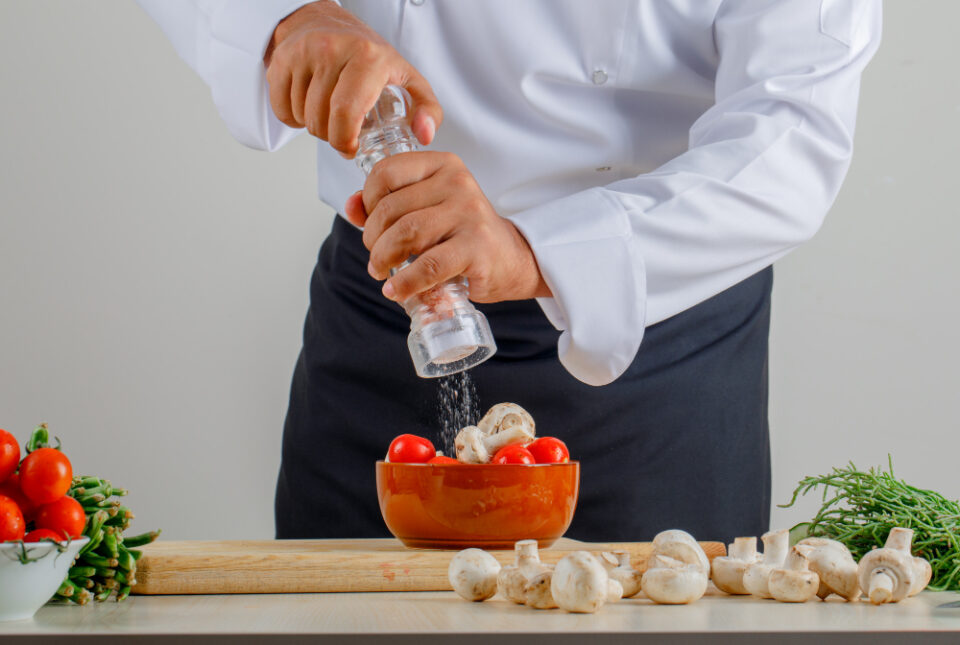There are days in my clinic when I feel like a salt trader rather than a doctor.
“Doctor, how much salt should I eat?” they ask, eyes wide with the urgency of a man dangling over a pot of boiling fish curry.
Another follows, “Doctor, I heard Himalayan pink salt will cure my blood pressure?”
A third, more sophisticated voice pipes up, “Doctor, should I switch to Maldon sea salt? My cousin in London swears by it!”
Once upon a time, the only salt we knew was that coarse, slightly damp thing my grandmother kept in a wooden box. Now, Bangalore patients are spoilt for choice. Pink salt, black salt, rock salt, sea salt, Celtic salt, smoked salt, truffle salt… I half expect someone to ask me about moon salt harvested under a full moon from the tears of Himalayan goats.
How much salt should you eat?
The scientific answer is simple: not more than 5 grams per day — about one teaspoon. But real life is anything but simple. Especially when you live in India, where salt is not just a taste — it’s an emotion.
Every hypertensive patient asks, “Doctor, should I stop taking salt altogether?”
“No,” I reply, “you should stop topping up with pickles, papads, salted biscuits, chips, bhujia, and that extra sprinkle on your plate. But you can enjoy a pinch occasionally.”
Ayurveda categorises salts under Lavana Varga and does not ban them entirely. In fact, it recommends different salts for different needs.
Saindhava Lavana (Himalayan rock salt) — best for digestion, least heating.
Samudra Lavana (Sea salt) — strengthens tissues but can cause water retention if overused.
Kala Namak (Black salt) — aids digestion, relieves flatulence.
Vida Lavana — treated salt, stronger action, a bit heating.
Audbhida Lavana — a rare salt found in the earth, said to have cooling properties.
Each salt has a role, like different spices in a curry. Ayurveda’s subtlety never ceases to amaze me.
Recently, Bangaloreans have been exploring exotic salts, as if it were a new weekend hobby.
“You know, Doctor,” one fashionable young lady told me last week, “I only use fleur de sel harvested in France!”
“Good for you,” I told, “but if your blood pressure is shooting like a Diwali rocket, fleur de sel won’t rescue you.”
The reality is that all salts are primarily sodium chloride. Whether it’s sprinkled by handmaidens in Tuscany or picked up by labourers in Sanikatta, sodium is sodium.
What about iodised salt?
A vital public health initiative.
Iodine deficiency used to cause goitre and mental retardation. Thanks to iodised salt, India has made giant progress. But now, ironies abound. Some people, in their craze for ‘natural’ salts, skip iodised salt entirely, opening the door to old enemies.
In Ayurveda, Saindhava Lavana (rock salt) is naturally rich in minerals and less aggravating to Pitta dosha compared to sea salt. It is cooling, light, and easily digestible. Ideal for day-to-day use, especially in our hot climates. However, remember that even the healthiest salt, when consumed in excess, can be harmful.
What happens when you eat too much salt?
High blood pressure, heart disease, kidney stress, osteoporosis, water retention, and even cognitive decline. I have seen it in my patients, year after year.
One retired army officer said, “Doctor, my ankles swell every evening like a puffed puri!”
Turned out he was addicted to salted peanuts during his TV time.
Restricting salt is not easy in Indian society.
Saying no to pickles at a family gathering feels like committing a bigger crime than forgetting your wedding anniversary and declining a crunchy, salt-laden papad? Enough to make the elders gasp in disbelief. And refusing a second helping of spicy, salted buttermilk at the end of the meal? You might as well announce you’ve abandoned your roots — it’s taken that seriously.
I still remember my Karwar patient’s warning: “Without salt, fish dies again on the plate.”
What about hidden salts?
Many foods quietly smuggle salt into our bodies — ketchup, bread, cheese, chaat masala, processed snacks, instant noodles, papads, ready-to-eat gravies.
I tell my patients, “Don’t just check how much salt you add — check how much salt is hidden.”
One memorable incident was a 70-year-old diabetic, hypertensive, and cardiac patient who came to me with uncontrolled oedema. When I grilled him gently, he finally admitted, sheepishly, “Doctor, I only eat two pickles daily… big ones, from my hometown- Thirthahalli Appe Midi Pickle!”
Research suggests that reducing salt intake can lower blood pressure by 5–6 mmHg. In Ayurveda, excess salt (Lavana Rasa) is known to aggravate the Pitta and Kapha doshas, leading to symptoms such as thirst, burning, swelling, skin diseases, baldness, and premature ageing. A salty life is literally ageing faster!
How to balance?
- Use natural salts like Saindhava Lavana for daily cooking.
- Avoid processed foods and visible salt top-ups.
- Enjoy pickles, papads, and fried snacks occasionally, not daily.
- Enhance flavours with spices, herbs, lemon, and tamarind instead of just salt.
- If hypertensive, diabetic, or a kidney patient, watch salt like a hawk.
The best salt is the one you don’t crave too much.
My opinion after 25 years of practice!
Salt is not the villain. Overuse is.
Ayurveda repeatedly emphasises moderation (Mita Ahara). Even Amrit (nectar) taken in excess becomes Visha (poison).
One patient, a sweet grandmotherly lady, said to me recently, “Doctor, I have reduced salt… but life feels tasteless now.”
I replied, “A little blandness in food can add a lot of sweetness to life.”
Life needs a pinch of salt, not a fistful.
Choose wisely. Taste joyfully. Age gracefully.
Like in everything in Ayurveda, balance is the hidden salt of life.
==

